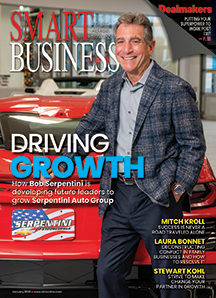Museums today are wrestling with new challenges and opportunities, and in response, they are evolving into a different species. The Cleveland Museum of Natural History is at the forefront of these changes, undergoing a dramatic transformation that is leading the field in reimagining the role of a museum.
Building on its long history of major discoveries and position as one of the top 10 museums of its kind in the country, the museum is combining innovative science education and cutting-edge research with an interactive, immersive visitor experience to create a unique space of discovery and exploration — a dynamic, responsive and constantly evolving laboratory that will educate and inspire the leaders of tomorrow.
The decisions we face today, from myriad advanced medical technologies to finding new sources of renewable energy demand a high level of facility in exploring issues informed by science. Scientifically savvy leadership is essential in every sector. Inspiring and educating the next generation of scientists and engineers is critical — but so is engaging and informing the next generation of corporate, government and community leaders.
Real science often missing
Decades after the recognition that a scientifically literate public and strong STEM education programs are urgently needed, significant progress remains elusive.
Efforts to engage students and a broader public in science are too often missing one critical ingredient: real science.
In many classrooms across the country, the ideas and artifacts of current science are noticeably absent. Students are presented with the dry facts of science without any exposure to the bigger questions and exciting discoveries of today.
Fortunately, engaging students of any age in the adventure of science is not difficult. Hand them a bear skull or a mastodon tooth. Let them watch — and ask questions — as a fossilized dinosaur skeleton is removed from its stony encasement. Explain what happens when two black holes collide or introduce them to the hunting techniques of a live praying mantis.
Digging deeper
We need to spark and encourage students’ innate curiosity, then build upon it with opportunities to dig deeper into topics that fascinate them. This is a powerful kind of learning that can lead to a life-long interest in further exploration.
CMNH is creating the facilities and programs to do just this. We have broken new ground in a partnership with the Cleveland Metropolitan School District so that the museum (and real science) is now an integral component of formal science education for every second grader in the city.
Our research labs and scientists, including more than a dozen active researchers, along with their graduate and post-doctorate students, are moving out of the basement and becoming part of the visitor experience.
Our new wing for Exhibits and Research will include innovative Science Studios, flexible classroom spaces located within exhibit galleries, that share glass walls with adjacent research labs, giving every student a view into real science. Summer internships take students out into the field or into the labs alongside our curators.
This connection to science will strengthen their future — and our community.
Evalyn Gates, Ph.D. is executive director and CEO of the Cleveland Museum of Natural History. After receiving her doctorate in theoretical physics from Case Western Reserve University in 1990, Gates held postdoctoral fellowships at Yale University and the University of Chicago and was a member of the theoretical astrophysics research group at Fermi National Accelerator Laboratory.

